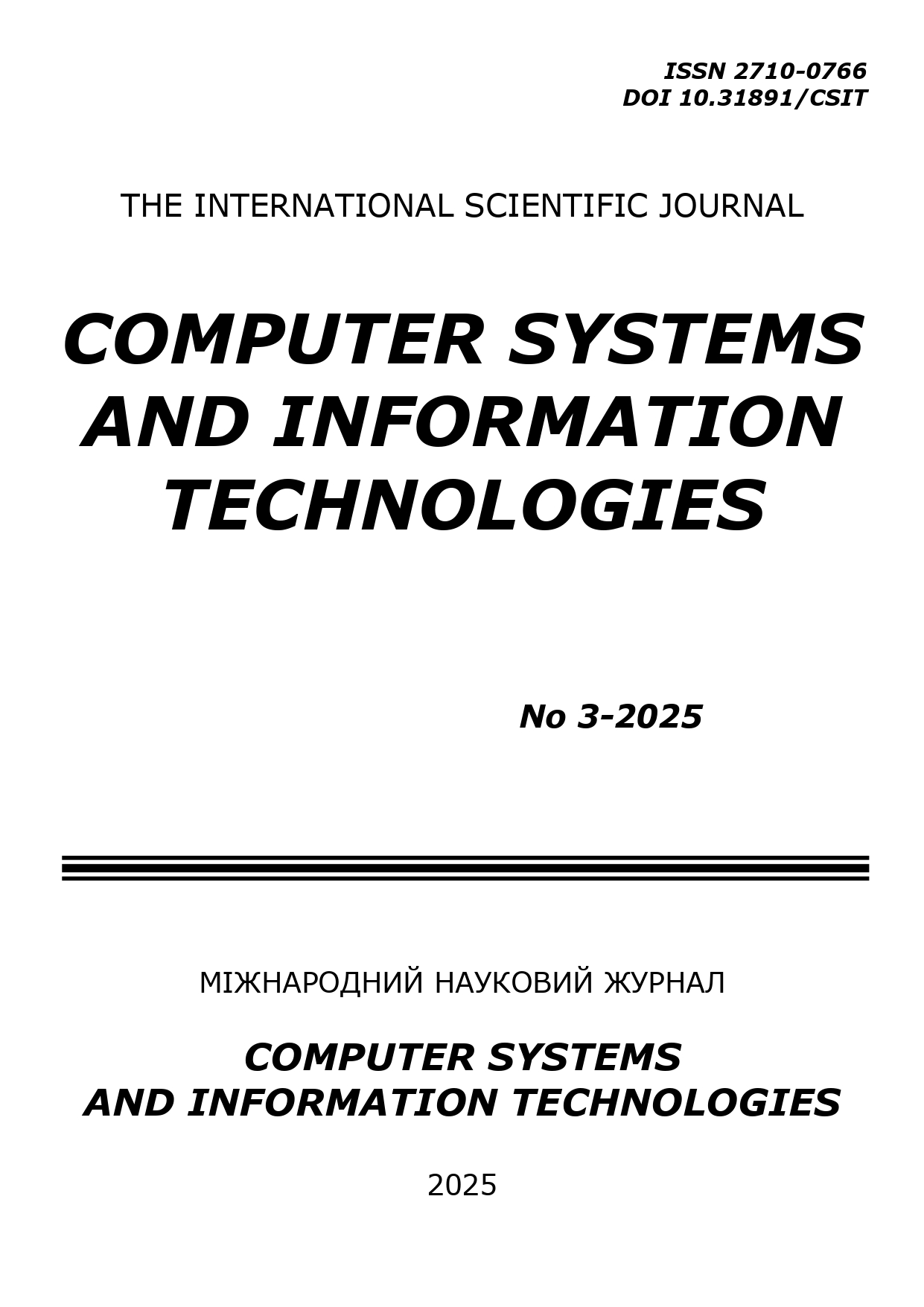CONSTRUCTION OF A FORMAL MODEL OF THE EXCURSION SELECTION PROCESS FOR STUDENTS: A CASE STUDY OF THE “PUSH” SCHOOL IN KHARKIV IN THE FORM OF A LOGICAL AFP-NETWORK
DOI:
https://doi.org/10.31891/csit-2025-3-2Keywords:
algebra of finite predicates, decomposition, AFP-logical network, formal model, binary relation, school, excursionAbstract
The article is devoted to the study of the finite predicate algebra toolkit for constructing a network model aimed at formalizing the process of selecting educational excursions for students of general secondary education institutions, in particular for the “Push” School in Kharkiv. The objective of this work is to develop a corresponding mathematical model in the form of a logical AFP-network. The organization of excursions constitutes an important component of the educational process, as it enables the integration of learning, recreation, social interaction, and career guidance for students. In the context of modern challenges—such as ensuring safety, aligning with educational objectives, and optimizing costs—there is a clear need for the development of effective methods for planning and selecting excursions, which determines the practical relevance of the research problem.
The application of predicate algebra in this domain has made it possible to formalize the excursion selection process while accounting for a wide range of parameters, including cost, duration, safety level, student categories, interests, educational objectives, accommodation conditions, and others. The methodology for constructing logical networks provides a systematic analysis of the subject area and enables the creation of a mathematical model in the form of a complex polyadic relation through the composition of corresponding binary relations derived from the subject area analysis, thereby optimizing the processing of input knowledge.
The mathematical model of the excursion selection process is represented as a polyadic predicate dependent on a set of variables, each associated with a specific domain of definition. Knowledge processing is carried out in the network nodes through conjunction and disjunction operations, with knowledge represented as predicates corresponding to subsets of the respective domains. Each binary predicate is described in the form of bipartite graphs and the corresponding formulas. The conjunction of all constructed binary predicates forms a logical network that enables iterative processing of information until a stable result is achieved.
The scientific novelty lies in the developed model, which facilitates the automation of the excursion selection process while accounting for the individual characteristics of students and the resources of the school. The results of this study represent an effective tool for optimizing educational programs.
Downloads
Published
How to Cite
Issue
Section
License
Copyright (c) 2025 Ірина ВЕЧІРСЬКА, Аліна CОКОЛОВА, Наталія ВАЛЕНДА

This work is licensed under a Creative Commons Attribution 4.0 International License.

